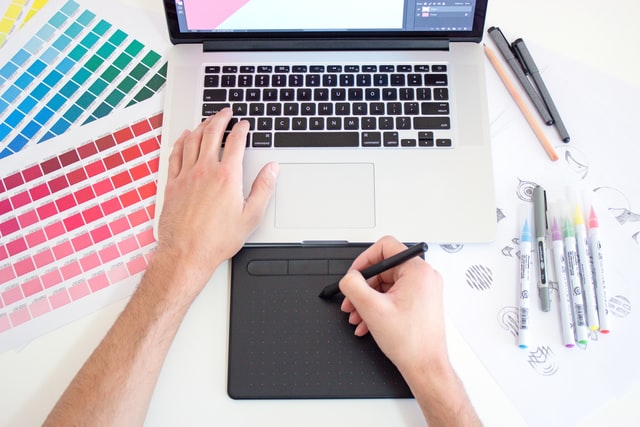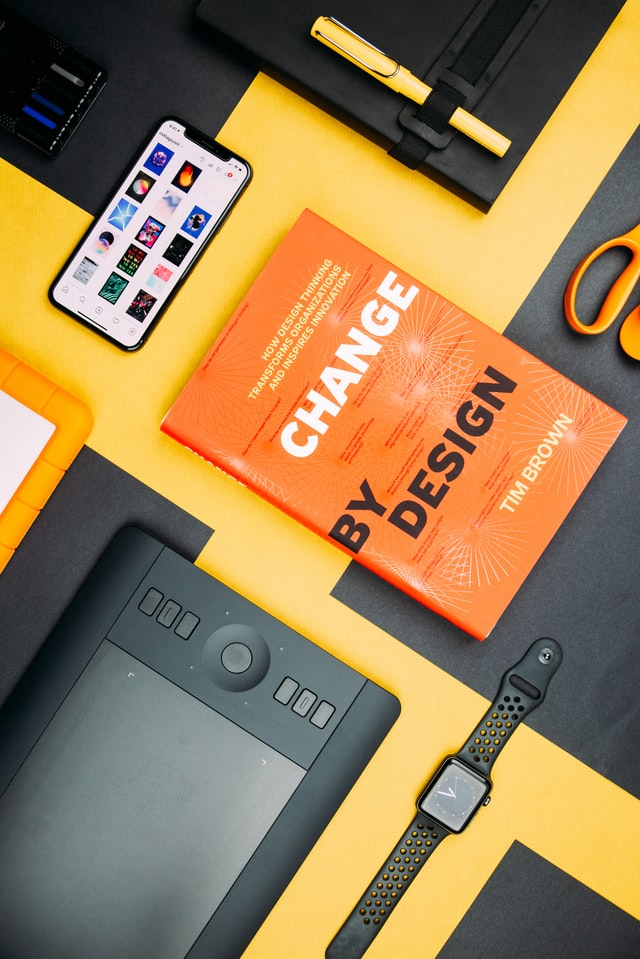The goal of graphic design is to solve problems and communicate ideas visually through typography, imagery, color, and form. Many designers specialize in one type, while others are more likely to concentrate on a set of related and similar types. Due to the constant changes in the industry, designers need to be flexible and lifelong learners to be able to add specializations to their resumes.
Graphic design can be divided into eight basic types:
- Graphic design for brand identity
Businesses and organizations establish relationships with their audiences through brands. Brand identities communicate the personality, essence, memories, emotions, and experiences of an organization. This is what graphic design for visual identity is about: developing the visual elements of brand identity that communicate the intangible qualities of a brand visually.
Creating elements suitable for all visual media requires an understanding of all forms of graphic design. A good communicator, creative and conceptual thinker, avid researcher, and interested in trends and industries is also a must for a designer.
- Graphic design for marketing and advertising
Companies hire marketing designers to create assets for their marketing strategies. Designers can create collateral for print, digital, and other media types or specialize in a particular form of media (vehicle wraps, for example). Digital assets are increasingly used in content marketing and digital advertising in addition to print materials.
Examples of marketing graphic materials are flyers, posters, banners, brochures, website images and blogs, billboards, magazine and journal ads, etc.
Positions in this area at the entry-level are great for learning processes and gaining valuable skills and experiences. An understanding of print and online production is required, as well as proficiency with graphic design, layout, and presentation apps.
- UI graphic design
Designing user interfaces for ease of use and user-friendliness is what UI design is all about. Screens, keyboards, and mice all form part of a UI. UI designers work on desktop apps, mobile apps, web apps, and games. UI developers write code to make the app work, while UX designers determine how it works.
- Graphic design for publications
Book design, newspaper design, magazine design, and catalog design are all examples of publication design. Publication graphic designers create carefully selected typography and accompanying artwork in collaboration with editors and publishers. Publishers hire publication designers as freelancers, agency members, or in-house employees. An excellent ability to communicate, layout, and organizing is required.
- Graphic design for packaging
Concepts are developed, mockups are created, and print-ready files are created by packaging designers. As well as strong print and industrial design skills, they require excellent conceptual and problem-solving skills. To meet the needs of clients, marketers, and manufacturers, they must be flexible.
- Graphic designs in motion
Graphics in motion are called motion graphics. In online media, television, and film, these effects can include animation, audio, typography, imagery, video, and other methods. Technology and video content have made the medium more popular than ever. Storyboards provide designers with a starting point for their concepts, which then become a reality.
- Graphic designs for the environment
By creating memorable, interesting, educational, and easier-to-navigate spaces, environmental graphic design connects people with places. A broad category of design is environmental design. Murals, signage, museum exhibitions, office branding, retail store interiors, and conference and event spaces are some examples.
Designing the environment involves graphic, architectural, interior, landscape, and industrial disciplines. There is a common tendency for designers to have both architectural and graphic design training and experience. As a way to create a more engaging experience, digital interactive displays continue to grow in popularity.
- Graphic designs for art and illustrations
There is often a misconception that graphic design and graphic art are the same. But that is not true. The purpose of design is to communicate and solve problems, and the purpose of graphic arts and illustration is to create original art. In creating their work, graphic artists use a wide variety of media and techniques. Many graphic designers also work as illustrators and graphic artists (and vice versa) thanks to overlapping skills and apps.
For the right type of graphic design, use the right tools
It is a rapidly growing field that requires skilled and specialized designers. Identifying the right graphic designer for your project will be easier if you know the types of graphic design.




